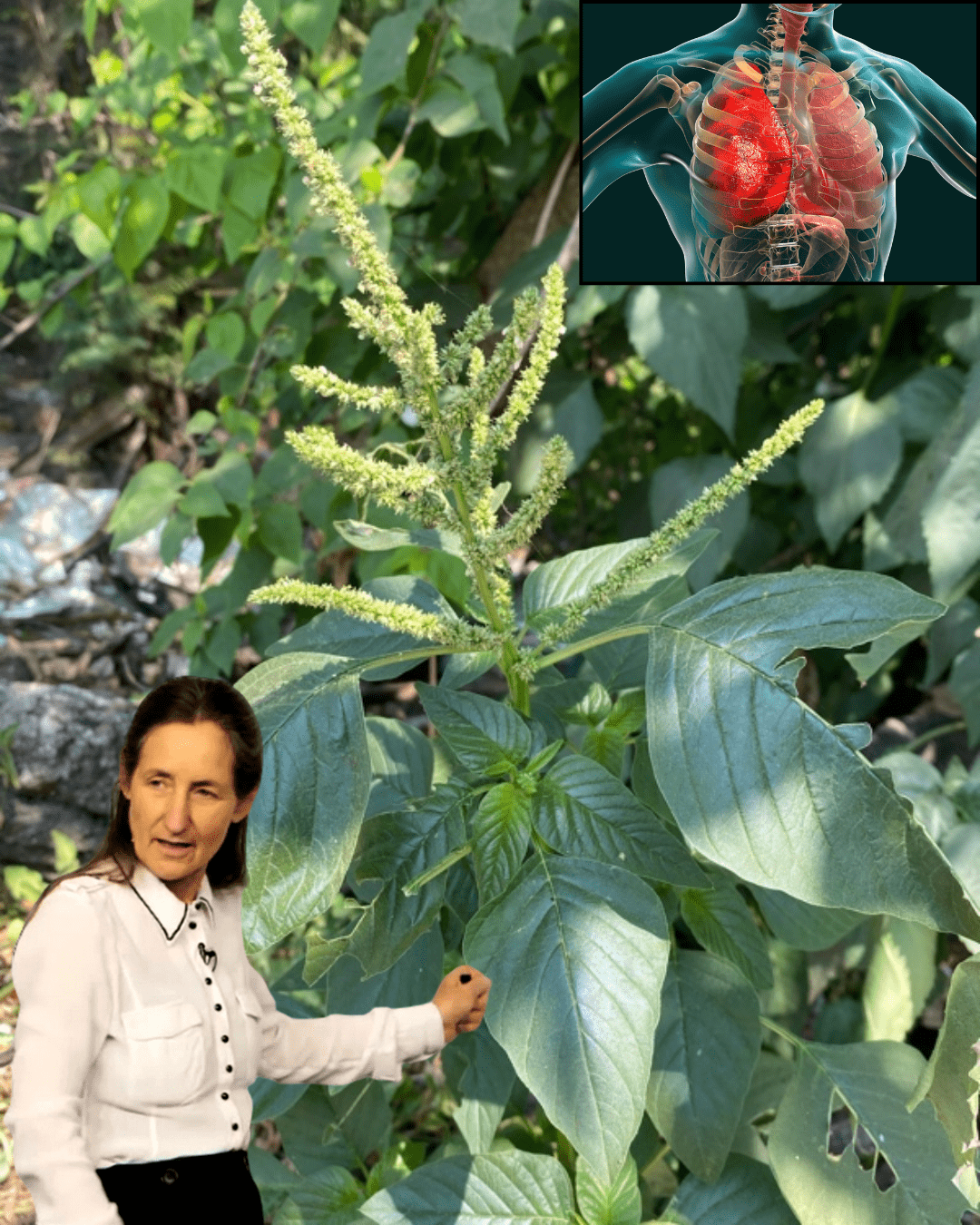What if the “weed” you’ve been pulling from your garden is actually a nutritional powerhouse waiting to transform your health and home? Meet Bledo Blanco (Amaranthus albus), also known as white pigweed or tumbleweed—a resilient, fast-growing wonder from the Amaranthaceae family. Dismissed by many as a nuisance, this plant has been cherished for centuries in traditional cultures for its edible bounty, healing properties, and eco-friendly perks. Curious why this humble herb deserves a spot in your life? Dive into these nine captivating insights to uncover its hidden treasures. From boosting your meals to healing your body, Bledo Blanco might just become your new favorite green. Keep reading to discover how this ancient ally can elevate your wellness and garden game!

🌱 1. Meet Bledo Blanco: A Striking Survivor
Bledo Blanco isn’t your average plant—it’s a testament to nature’s ingenuity. With its scientific name Amaranthus albus, it’s commonly called white pigweed, tumbleweed, or bledo blanco in Spanish-speaking regions. This annual herbaceous beauty features branching stems that soar up to 1 meter tall, adorned with small, oval-shaped green leaves that boast a pale underside for that signature silvery glow.
Tiny, greenish-white flowers cluster along the stems, giving way to nutrient-packed seeds. Native to the Americas, it has globe-trotted to become a familiar sight worldwide, often thriving where others falter. Imagine a plant so tough it laughs at tough conditions—Bledo Blanco embodies resilience, making it a must-know for any nature lover.
🥗 2. A Nutritional Powerhouse Disguised as a Weed
Ever wondered if weeds could be superfoods? Bledo Blanco proves they can. Its leaves and seeds are bursting with vitamins A, C, and K, plus essential minerals like iron, calcium, and potassium. These nutrients fuel everything from sharp vision to strong bones, all while keeping your immune system on high alert.
What sets it apart? It’s a rare plant-based protein source, rivaling some grains in amino acid content—perfect for vegans or anyone seeking sustainable eats. And at low calories, it’s a guilt-free addition to your plate. Picture adding a handful to your salad and feeling the vitality surge through you. This isn’t just food; it’s fuel for a thriving life.
🍲 3. Culinary Delights: From Garden to Gourmet
Bledo Blanco shines in the kitchen, turning “weeds” into wonders. Its tender leaves make a versatile leafy green: toss them raw into salads for a fresh, earthy crunch, or sauté them in stir-fries and stews for a milder, spinach-like flavor that melts in your mouth.
The seeds? They’re tiny treasures—grind them into flour for nutrient-dense bread, pancakes, or porridge that packs a protein punch. Or toast them for a nutty crunch atop yogurt or soups. In cultures across Latin America, it’s a staple for hearty meals that nourish body and soul. Ready to experiment? Start small, and watch how this plant elevates your everyday cooking to something extraordinary.
💊 4. Healing Magic: Traditional Remedies for Modern Woes
For generations, healers have turned to Bledo Blanco for its therapeutic touch. Its anti-inflammatory properties shine in infusions that soothe swollen joints or everyday aches, offering natural relief without the haze of pills. Struggling with digestion? This herb acts as a gentle aid, easing constipation, indigestion, and bloating to keep your gut humming happily.
Topically, poultices from its leaves speed wound healing and calm skin irritations, while its diuretic effects flush toxins and support kidney health. Loaded with antioxidants, it battles oxidative stress, bolstering immunity and promoting radiant skin. Imagine a plant that heals from the inside out—Bledo Blanco invites you to embrace nature’s pharmacy right at home.
🐄 5. Farm-Friendly: Boosting Agriculture Naturally
Beyond your plate, Bledo Blanco is a farmer’s secret weapon. As nutrient-rich livestock feed, it delivers vitamins and proteins that keep animals healthy and productive, turning potential pests into profitable forage.
Its rapid growth adds organic matter to soil as it decomposes, enhancing fertility and preventing erosion in vulnerable fields. In smart agricultural setups, it even outcompetes harmful weeds, maintaining balance without chemicals. For sustainable farmers, this plant isn’t a problem—it’s a partner in building resilient, bountiful lands.
🌍 6. Eco-Warrior: Environmental Perks You Can’t Ignore
In a world craving green solutions, Bledo Blanco steps up as an environmental champ. This drought-tolerant dynamo flourishes in arid zones, making it ideal for low-water landscaping that combats desertification and stabilizes soil against wind and rain.
Its delicate flowers draw in pollinators like bees and butterflies, fostering biodiversity and supporting local ecosystems. By weaving this plant into your yard, you’re not just gardening—you’re contributing to a healthier planet, one resilient root at a time. Feel the satisfaction of growing something that gives back to Mother Earth.
⚠️ 7. The Flip Side: Navigating Potential Pitfalls
No plant is perfect, and Bledo Blanco has its caveats. In many areas, it’s labeled an invasive species, aggressively competing with crops for water and nutrients, which can frustrate gardeners and farmers alike.
Under stress, it may accumulate nitrates, posing toxicity risks to grazing animals if overfed. And its oxalate content could trouble those prone to kidney stones if eaten excessively. Knowledge is your ally here—plant mindfully, harvest wisely, and consult experts to turn challenges into manageable aspects of this versatile herb.
🌿 8. Grow Your Own: Effortless Cultivation Tips
Dreaming of a garden that thrives on autopilot? Bledo Blanco makes it simple. It adores well-drained sandy or loamy soil but adapts to almost anything, proving its hardy spirit. Bathe it in full sun for best growth, though it shrugs off partial shade like a pro.
Water sparingly—its drought resistance means it sips rather than gulps, perfect for water-wise living. Start from seeds that sprout swiftly in warm soil, spacing them for bushy growth. Whether in pots or plots, this plant rewards beginners with lush abundance. Watch it flourish and feel the joy of nurturing nature’s tough cookie.
🌟 9. Cultural Roots: A Symbol of Abundance and Healing
Bledo Blanco’s story is woven into the fabric of cultures worldwide. In Latin American and Indigenous communities, it’s been a cherished food and medicine for centuries, starring in recipes and remedies passed down through generations.
Beyond sustenance, it holds spiritual significance, featuring in rituals that celebrate health, fertility, and prosperity— a living emblem of abundance in lean times. By inviting this plant into your world, you’re honoring ancient wisdom and connecting to a legacy of resilience and renewal. It’s more than a herb; it’s a bridge to cultural heritage.

✨ Why Bledo Blanco Deserves Your Attention
Bledo Blanco (Amaranthus albus) transcends its weed reputation, emerging as a multifaceted marvel for health, home, and harmony. Its nutrient-dense leaves and seeds fuel vibrant living, while its medicinal might soothes body and mind. In gardens and farms, it builds soil and feeds flocks; in ecosystems, it champions sustainability. Sure, invasiveness calls for caution, but with mindful use, its gifts far outweigh the glitches.
This plant whispers a profound truth: what we call weeds often hold the deepest lessons in endurance and generosity. Whether you’re a foodie, healer, or eco-enthusiast, Bledo Blanco invites you to rethink, replant, and rejoice in nature’s overlooked gems.
🚀 Embrace Bledo Blanco in Your Life Today
Why settle for ordinary greens when Bledo Blanco offers extraordinary potential? Start by sowing a few seeds, whipping up a simple salad, or brewing a healing tea. Feel the empowerment of turning “trash” into treasure, nourishing your body while honoring the earth.
Ready to unlock its magic? Your garden—and your well-being—await this resilient revelation. Plant it, taste it, heal with it, and watch your world bloom with possibility.
💬 What’s your take on Bledo Blanco? Have you grown or cooked with it? Share your stories in the comments below!






